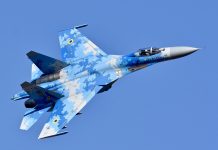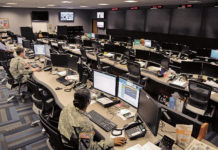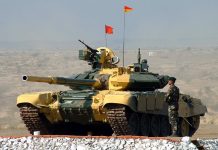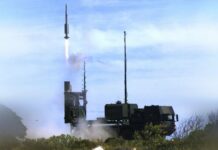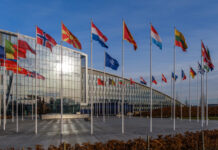Since 1952, the European Union, represented at that time by the European Coal and Steel Community, has succeeded tremendously in its core pursuit of collective peace and prosperity through enhancing economic cooperation within a single market. While this international approach has afforded the bloc the ability to compete with superpowers, it has not offered enough protection against some of the negative consequences of globalisation in a modern era defined by outsourcing and cost-based decision-making.
As is clearly highlighted by the current War in Ukraine, the EU’s dependence on Russian energy has demonstrated the ever-narrowing gap between economic and security policy, as well as the far-reaching effects associated with the weaponisation of critical resources and supply chains. Yet as difficult a position as the EU finds itself in with Russia, there exists an even more dangerous economic relationship with far deeper, long-lasting implications and even fewer opportunities to decouple.
Metal Vulnerability
Rare Earth Metals, or simply ‘rare earths’ have become indispensable components in manufacturing the technology that powers daily life. Computers, mobile phones, satellites, robotics, electric vehicles and modern medical equipment are among the myriad of products that rely on the successful exploitation of this non-renewable resource and, over the past 30 years, China has strategically cornered the market. Low labour costs, high government control over industry, and lax environmental regulations have contributed to China’s ability to offer an economical solution to rare earth mining, manufacturing, and processing while the rest of the global free market all too willingly ceded control.
In response to Russian aggression in Ukraine, on 18 May 2022 the European Commission announced the REPowerEU initiative designed to “rapidly reduce dependence on Russian fossil fuels and fast forward the green transition.” In addition to finding short-term alternative sources of oil, gas, and coal, a key element of this plan includes the dramatic expansion of clean energy technology, with an increase in the EU’s clean energy target from 40 per cent to 45 per cent by 2030. What the press release and factsheets fail to mention, however, is that this plan for reduced dependency on Russia demands an increased dependency on China.
Chinese Stranglehold
Like most modern technology, manufacturing clean energy infrastructure relies on rare earths. When considering the entire supply chain, it is estimated that China is responsible for 98 per cent of the rare earth materials required for the wind turbines, electrical vehicles, and high-power batteries that the EU’s Green Deal is entirely dependent on. By comparison, the Organization of Petroleum Exporting Countries (OPEC), the world’s largest energy monopoly, currently controls 40 per cent of global oil production, and with that stake, has yielded tremendous geopolitical power for its members for decades.
It can be argued that part of OPEC’s comparative advantage is that its member states sit on nearly 80 per cent of proven oil reserves whereas only 37 per cent of known rare earth deposits are located in China. However, China’s real strength lies beyond the mines. Refining the material and manufacturing the end products involves costly and environmentally-challenging processes that most of the world has all but abandoned in pursuit of short-term financial gain and popular pressure to combat climate change and pollution.
EU Stance
The EU’s response to Russia’s invasion of Ukraine has been, in most respects, unprecedentedly resolute – highlighted by a comprehensive flight ban, coordinated economic sanctions, Sweden and Finland’s bid for NATO membership and, most recently, Denmark’s joining of the Common Security and Defence Policy (CDSP). Yet it’s difficult to envision a similar response against a potential adversary whose isolation from the global community would have far wider-reaching, and more devastating consequences.
In the past few years, there have been instances where the EU has demonstrated concern for the actions of China – condemning human rights abuses against the Uyghur population, promoting alternatives to the ‘Belt and Road Initiative’ for Africans, and criticising the recent violations of electoral processes in Hong Kong. Yet apart from some symbolic and soft exchanges of sanctions, Europe has been careful to pull up short of anything that can be seen as strongly antagonistic to their largest trading partner.
As China observes the global response to Ukraine, it is undoubtedly considering options and timing with regard to its own long-proclaimed pledge to reunite Taiwan with the rest of the country. However, the assertive declarations of President Biden in May and Speaker of the House, Nancy Pelosi’s controversial diplomatic visit to Taiwan in August, have demonstrated renewed US resolve to counter such aims. The EU, on the other hand, has shied away from adopting such a strong stance. When Lithuania opened a ‘Taiwan Representative Office’ in 2021, the response from China was swift – unofficially restricting trade relations with the small Baltic nation and applying indirect economic pressure via the rest of the EU. Despite some condemnation of Beijing’s discriminatory measures and offers of economic support to Lithuania, the overall response from the rest of the European bloc was mostly non-committal, following an increasingly common pattern of strategic ambiguity.
Energy Vulnerabilities
Much like Vladimir Putin’s periodic tests of EU resolve, dating back to his bombastic statements at the Munich conference of 2007, it can be argued that China’s attempts at economic coercion are similar, comparatively small-scale probes, presaging future, larger-scale action. Despite the EU’s sanctions and censure that followed the war with Georgia, the illegal annexation of Crimea, and several instances of political interference, Russia’s lucrative energy arrangement with the bloc continued to grow, further deterring the use of the available weapons in Europe’s future foreign policy arsenal. Unfortunately, the responses to Beijing’s recent antagonisms fail to demonstrate that those lessons have been learned. The condemnation of a belligerent is only as strong as a deepening, economic reliance will allow it to be.
While it can be argued that China’s equal dependence on the West as trade partners would limit its option to play the ‘rare earths card’ – a rare earth export ban – that situation may not be permanent. China has now twice threatened US arms manufacturers with rare earth boycotts in response to sales of military equipment to Taiwan, but both times has failed to follow through. However, as Beijing employs its own form of strategic ambiguity in the Russian-Ukraine War, it is positioning itself well for a pivot to counter any potential future economic interruption. With January’s implementation of the Regional Comprehensive Economic Partnership (RCEP), the world’s largest trade agreement, and Beijing’s “Made in China 2025” initiative, it may be only a matter of time before Xi Jinping feels comfortable taking more concrete steps to fulfil his foreign policy aspirations.
Yet even if the EU were to apply lessons learned from Russia, when considering the rare earth market, there is no realistic alternative to China’s supply chain. Unlike with Russian oil and gas, no other partner exists to whom the EU or the US could turn to in the face of trade interruption. It is a difficult and environmentally challenging infrastructure that China has perfected and patented for decades while the rest of the world idly sat by.
Military Hardware Implications
Perhaps even more alarming than the EU Green Deal limitations are the direct military implications. In one of the first big decisions since its US$100Bn defence pledge, Germany recently decided to purchase 35 F-35A fighter aircraft from the United States. It is an impressive piece of equipment which can provide both strategic and tactical capabilities but, as can be expected with most modern military technology, it relies heavily on rare earth components imported from China. As fears mount regarding China and Russia being drawn closer together, any current comparative advantage for the western alliances in a theoretical military conflict, in Europe or Southeast Asia, must be weighed against long-term forecasts regarding the sourcing of such critical materials.
The Paris Agreement of 2015 reinforced the EU’s status as the global leader in the crusade against climate change and Russia’s latest aggression compelled many member states to increase investments in defence technology. However, what fails to be properly accounted for is that both of these pursuits are heavily contingent on an uninterrupted flow of rare earths. This entails being on the receiving end of a supply chain monopolised by a nation that does not share the same democratic principles, is less constrained by environmental standards, and, against whom, the EU will be increasingly challenged to act.
There are efforts to correct this imbalance. From 2013-2017 the European Commission funded EURARE–a project for the “development of a sustainable exploitation scheme for Europe’s rare earth ore deposits” – that ultimately surveyed and investigated 76 different locations for mining within the bloc. But despite the initial optimism, the project’s recommendations have largely been shelved as popular environmental concern blocks any attempt to secure mining licenses. To this day, there are no active rare earth mines in Europe.
More recently in 2021, the European Raw Materials Alliance (ERMA) (another Commission brainchild) published a ‘Call for European Action’ with a proposed industry-led investment pipeline through which 20 per cent of EU rare earth demands could be sourced locally by 2030. Unfortunately, ERMA now faces a similar fate as EURARE, with risk-averse private investors cautiously considering shifting political regulations, the unpredictability of global markets, and the high costs of developing a complex supply chain.
American Reactions
The United States has also been attempting to address this strategic challenge. Since 2020, Congress has twice introduced legislation designed to both restrict the use of Chinese imported minerals in military technology and support the development of local industrial infrastructure. The Department of Defense (DoD) is funding the development of a processing facility for the MP Materials Corporation in Mountain Pass, California, the only active US rare earth mine, and has awarded millions to Australian-based Lynas Rare Earth for similar developments in Texas. Furthermore, in the private sector, Energy Fuels has teamed up with Canadian-based Neo Materials, owner of the only relevant rare earth processing plant in Europe, to propose a North American-European rare earth supply chain that creatively leverages multinational strengths and promotes environmentally responsible, sustainable exploitation.
However, critics are quick to point out how similar efforts in the past have failed. From 2010-2015 the private investment firm, Molycorps, sank US$1.5Bn into revitalising Mountain Pass under ‘Project Phoenix’ before ultimately collapsing into bankruptcy under intense market competition and pressure from environmental groups. Despite the initial political enthusiasm, both rare earth bills still sit in Congressional committees, awaiting further action, behind higher-priority legislation.
One such bill is the Inflation Reduction Act, which passed narrowly in the House and the Senate and was signed into law by President Biden on 16 August 2022. Among its provisions are incentives for the green energy sector and an expansion of the presidential budget for the Defense Production Act of 1950. While this could provide the catalyst necessary to support rare earth supply chain development, critics of the bill argue that it does not go far enough to demand energy independence. While many within the EU applaud the renewed US commitment to clean energy principles, there is concern that this semi-isolationist policy will unfairly prejudice European industry in potential violation of World Trade Organisation (WTO) rules.
The current economic fallout from the War in Ukraine incentivises the EU to urgently pursue independent supply chains. However, absent staunch, sustained government support, it is unlikely that private industry will be able to weather the challenges and develop a viable competitor to the Chinese rare earth monopoly. Considering the current situation, the EU has two options:
(1) Aggressively promote and support the development of mines and processing facilities within the bloc; and/or (2) Partner with like-minded allies outside of Europe and in order to more equitably share the burdens and evolve the technologies necessary to responsibly develop this essential infrastructure. One such potential external partner could include Turkey who, in July 2022, announced the discovery of the world’s second-largest reserve of rare earths. Despite an often strained relationship with the west, Turkey remains a NATO member and these critical deposits could prove an important strategic edge to the alliance.
Through EURARE and ERMA the EU Commission has supported these pursuits, but the complex nature of the legislative process makes the elevation of opinions and recommendations to directives and regulations extremely difficult. With its somewhat unstable, semi-federal political status, it is challenging for the EU to gain the required consensus to form strategic partnerships outside the bloc and pass regulations that won’t erode member-state sovereignty. However, as recently illustrated by both the global pandemic and Russia’s aggression in Ukraine, the EU is improving its capacity to react more quickly and decisively in the face of a crisis.
Timeframes
However, compared to oil and gas, the threat of Chinese rare earth monopoly is either widely underestimated or conveniently ignored across most of Europe. The best estimates for creating independent rare earth supply chains outside of China predict a minimum of 10-15 years for development, not including for the considerable risks of such ventures. By not prioritising rare earth supply chain development, the EU’s rapid charge towards clean energy solutions will trade a nearly 30 per cent dependence on Russian oil and gas for a substantially higher, and significantly more dangerous reliance on China.
As a result of the increasing interconnectedness between economic and security policy, EU inaction here risks jeopardising not only its goals for energy independence but also its support to democratic values abroad and its ability to maintain strategic autonomy amongst global superpowers.
When French Foreign Minister Robert Schuman initially proposed the European Coal and Steel Community in 1950, its purpose was to pool resources and remove competition over critical materials that had twice since fuelled catastrophic world wars. In Schuman’s own words, this unity of effort would make war between rivals “not merely unthinkable, but materially impossible.” It required some short-term national sacrifices but, as one of the foundational actions of the EU, this action can be considered at least partially responsible for the bloc’s historic period of subsequent stability. Considering modern challenges to European solidarity – both internal and external – it is time for the EU to consider a similar, unifying effort with the same aim and potential for fostering long-term peace and sustainability.





